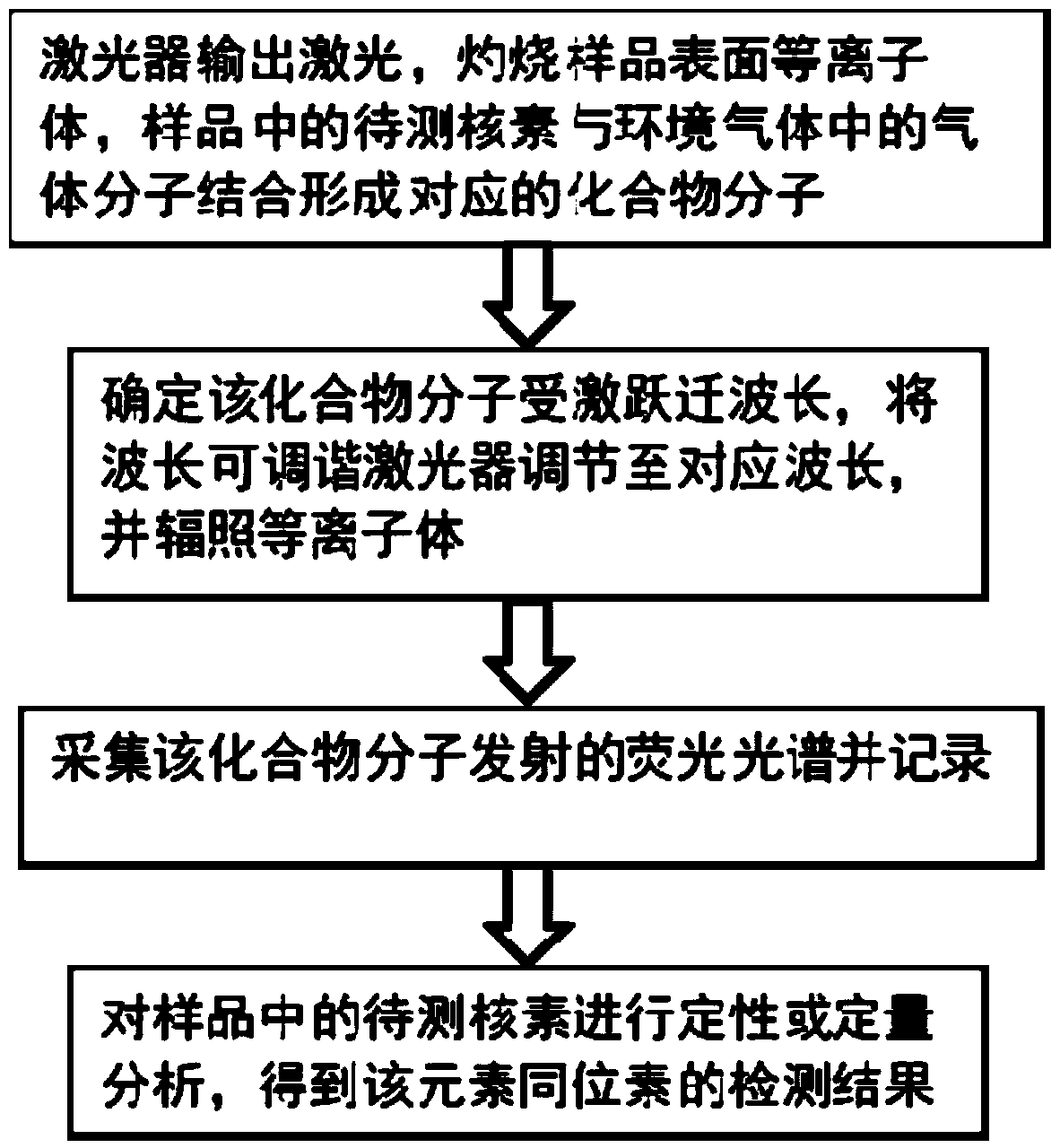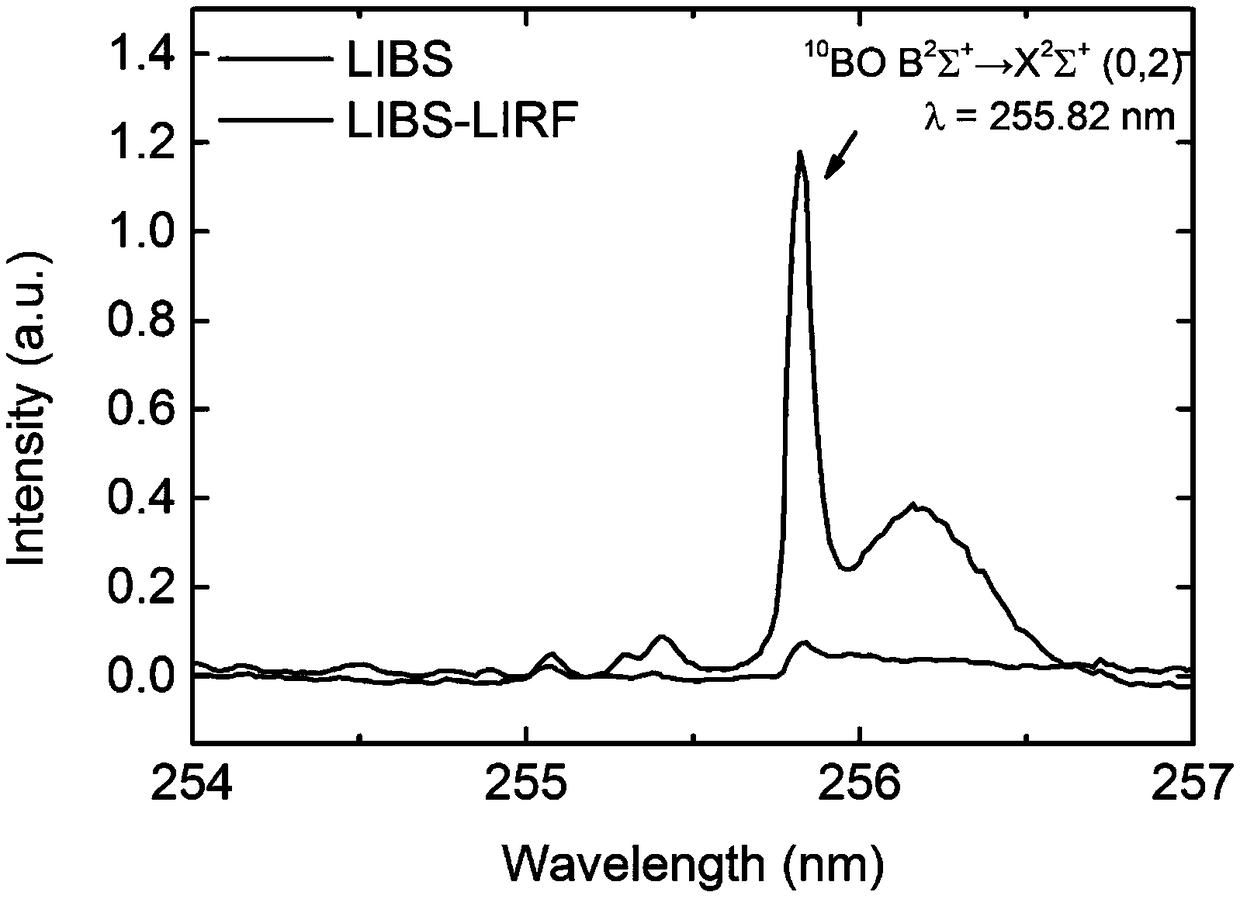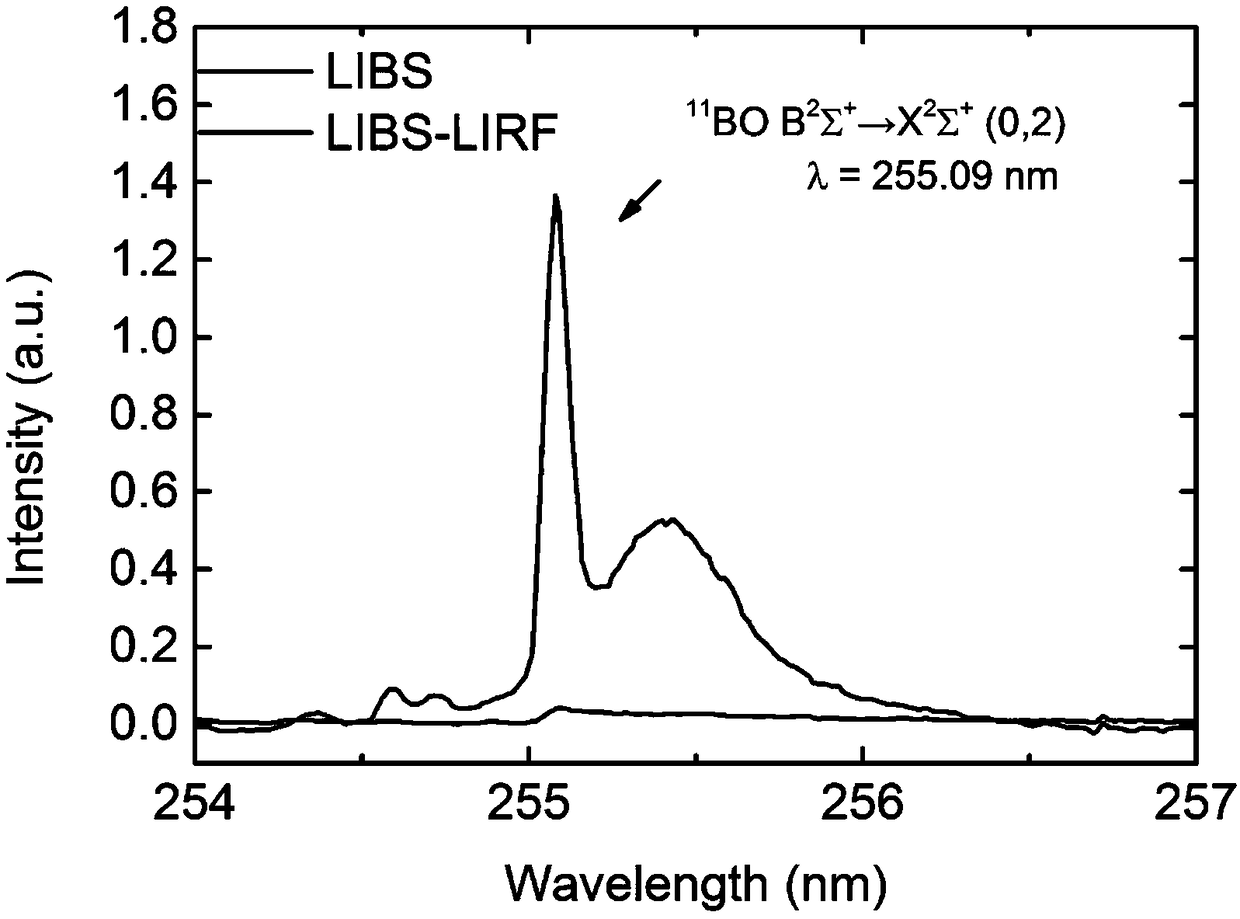Laser probe molecular resonance excitation detection method for isotopes
A laser probe and molecular resonance technology, which is applied in the field of plasma emission spectroscopy, can solve the problems of weak molecular spectral intensity, inability to detect isotopes, and low detection sensitivity, so as to reduce sample damage, achieve minimal damage or even non-destructive Detection, the effect of large wavelength interval of spectral lines
- Summary
- Abstract
- Description
- Claims
- Application Information
AI Technical Summary
Problems solved by technology
Method used
Image
Examples
Embodiment 1
[0044] Taking the detection of boron-10 isotope in boric acid as an example, the method is described in detail.
[0045] The sample selected in this embodiment is boric acid, and boron-10 accounts for 1%-99% of the atomic content of boron.
[0046] The Brilliant laser from Quantel Company in France and the Vibrant wavelength tunable laser from OPOTEK Company in the United States were selected as the laser, and the SCT320 spectrometer (frequency 10 Hz, pulse width) from Princeton Instrument Company was selected as the spectrometer. Select the ν=0 vibration level electrons in the B2Π energy band of the boron-oxygen molecule (10BO) as the target excited electrons, and the 244.02nm spectral line in the B2Σ(υ=0)→X2Σ(υ=1) energy band of the boron-oxygen molecule (10BO) To excite the line, and adjust the wavelength of the wavelength tunable laser to 244.02nm.
[0047] (1) Turn on the Brilliant laser, output the laser, the beam is reflected by the mirror, and focused at 2mm below the...
Embodiment 2
[0053] Taking the detection of boron-10 isotope boron-11 in boric acid as an example, the method will be described in detail.
[0054] The sample selected in this embodiment is boric acid, and boron-11 accounts for 1%-99% of the atomic content of boron.
[0055] The Brilliant laser from Quantel Company in France and the Vibrant wavelength tunable laser from OPOTEK Company in the United States were selected as the laser, and the SCT320 spectrometer from Princeton Instrument Company was selected as the spectrometer. Select the ν=0 vibration level electrons in the B2Π energy band of the boron-oxygen molecule (11BO) as the target excited electrons, and the 243.69nm spectral line in the B2Σ(υ=0)→X2Σ(υ=1) energy band of the boron-oxygen molecule (11BO) To excite the line, adjust the wavelength of the wavelength tunable laser to 243.69nm.
[0056] (1) Turn on the Brilliant laser, output the laser, the beam is reflected by the mirror, and focused at 2mm below the sample surface throu...
Embodiment 3
[0062] Taking the detection of carbon-12 isotope in urea as an example, the method is described in detail.
[0063] The selected sample is urea, and the carbon-12 accounts for 1%-99% of the atomic content of the carbon element.
[0064] The Brilliant laser from Quantel Company in France and the Vibrant wavelength tunable laser from OPOTEK Company in the United States were selected as the laser, and the SCT320 spectrometer from Princeton Instrument Company was selected as the spectrometer. Select the ν=1 vibration level electrons in the carbon nitrogen (12CN) B2Π energy band as the target excited electrons, and the 387.14nm spectral line in the carbon nitrogen (12CN) B2Σ(υ=1)→X2Σ(υ=1) energy band is The line was excited and the wavelength tunable laser was tuned to 387.14 nm.
[0065] (1) Turn on the Brilliant laser, output the laser, the beam is reflected by the mirror, and focused at 2mm below the sample surface through an ultraviolet-grade quartz lens, ablation the surface ...
PUM
 Login to View More
Login to View More Abstract
Description
Claims
Application Information
 Login to View More
Login to View More - R&D
- Intellectual Property
- Life Sciences
- Materials
- Tech Scout
- Unparalleled Data Quality
- Higher Quality Content
- 60% Fewer Hallucinations
Browse by: Latest US Patents, China's latest patents, Technical Efficacy Thesaurus, Application Domain, Technology Topic, Popular Technical Reports.
© 2025 PatSnap. All rights reserved.Legal|Privacy policy|Modern Slavery Act Transparency Statement|Sitemap|About US| Contact US: help@patsnap.com



